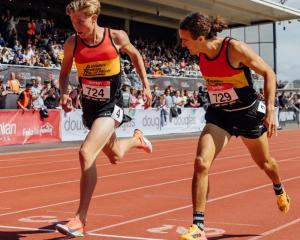The Fifa World Cup is under way and there is no doubt as to why the deft footwork, supreme fitness, vision and spatial awareness on display gives association football its nickname as the beautiful game.
One aspect of the game, however, that isn't beautiful is diving.
''Simulation'', as it is formally known, is when a player attempts to gain an unfair advantage by diving to the ground and possibly feigning an injury, to appear as if a foul has been committed.
As a self-confessed rugbyhead I can't understand how the theatrical nature of diving can ever be convincing.
It is so over the top and yet officials continue to put up with players who get a case of sleeping feet and flailing arms while somersaulting over thin air.
How can these agile players suddenly become so clumsy?
One can't help but contrast football and rugby when it comes to their reactions to injuries - real or imaginary.
In rugby, the series between the All Blacks and England provided many examples of players who wipe blood away and ignore pain while continuing to pummel each other.
In football matches, where every penalty kick or free kick provides a crucial scoring opportunity, players writhe around on the ground in agony, rubbing their shins and chins with very little in the way of blood or contact being obvious.
I can see why the slogan ''Footballers spend 90 minutes pretending to be hurt while rugby players spend 80 minutes pretending not to be hurt'' is funny - remember, all jokes have a grain of truth in them.
There is no denying that football is a fast game, and because of the agility and swiftness involved it is difficult to detect when a genuine foul does or does not occur, but leaving one official to decide whether a player has fallen for genuine or disingenuous reasons will always be subjective.
Someone needs to invent a ''fake-o-meter'' for football because it is already having an impact on the outcomes of games.
Portugal's Pepe and Germany's Thomas Mueller battled for the ball when Mueller went down in a screaming heap clutching his mouth.
Pepe's reaction to this created an escalating scene of overdramatisation from both players, and although Pepe's head butt was more of a punt than a butt, it didn't do him or his team any favours when he received a red card.
The official needed to determine if Mueller's fall had the traits of a ''dive'', which include a separation in time between the impact and the simulation; a lack of ballistic continuity; and a lack of contact consistency.
In addition, the ''archer's bow'' pose has come to symbolise a dive.
This is where the head is tilted back, chest thrust forward, arms raised, and both legs bent at the knee to lift both feet off the ground to the rear.
This pose apparently gets maximum attention and it is a pose toddlers often use to get what they want when in the supermarket.
This pose seems very similar to that adopted by the streaker as he was tackled from behind by the security guard at Forsyth Barr Stadium.
But the streaker was definitely not simulating his fall because there was no separation in time between the impact and the fall, ballistic continuity was present, and contact between the two men during the tackle was pretty consistent!
The World Cup has provided some exciting and exhilarating moments during genuine play, controversial outcomes, and sheer brilliance.
Inevitably, as the tournament progresses and the stakes get higher, we'll see more dives, and whether we like it or not, that is part and parcel of the theatre we refer to as ''the beautiful game''.












